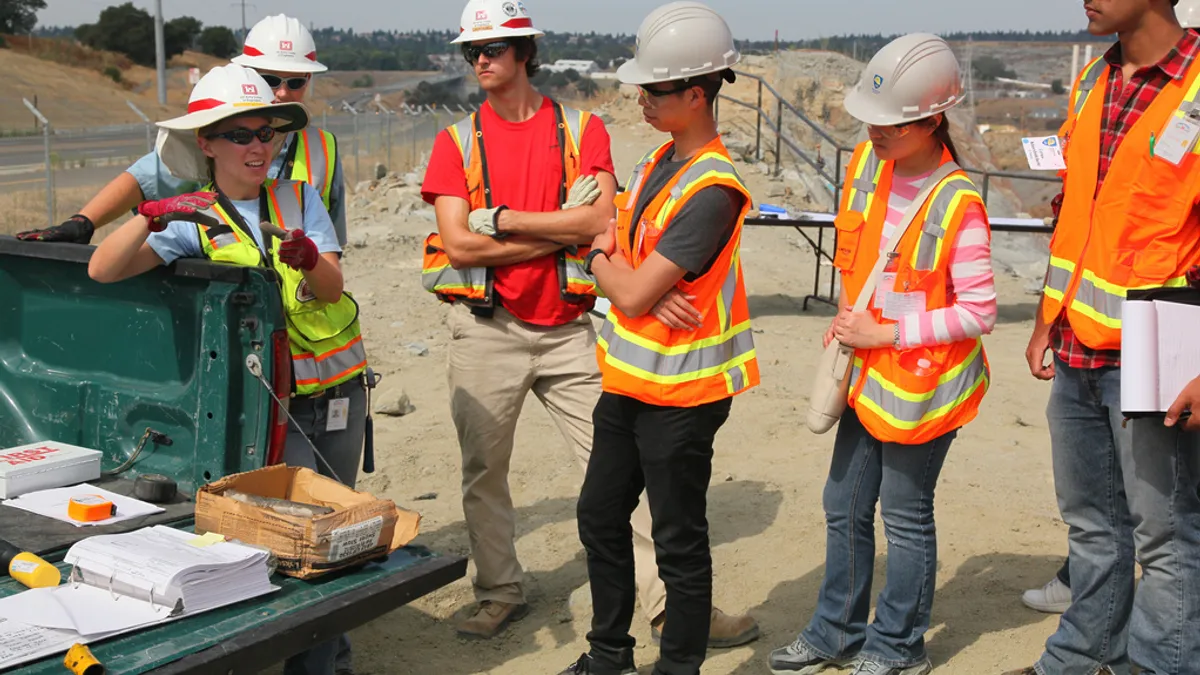Dive Brief:
- According to an Associated General Contractors of America survey of approximately 1,300 construction companies, 73% plan to add employees in 2017 in order to meet anticipated demand in both the private and public sectors.
- Despite the general optimism, firms also expressed concern that they will not be able to find enough qualified workers to fill available positions. In fact, 73% of respondents said they are having difficulty finding qualified workers, and 76% of those surveyed believed that the tight labor market would only get worse, or at least stay the same, in 2017.
- The report, produced in conjunction with Sage Construction and Real Estate, also found that employers were worried about rising regulatory and healthcare costs.
Dive Insight:
Only 9% of contractors surveyed expect the demand for their services to decline, with the balance anticipating either growth (46%) or business to remain at current levels (45%). Survey participants were most enthusiastic about their prospects in the hospital-retail and warehouse-lodging markets but also anticipated stronger activity in all other markets, with the exception of the multifamily sector. Only 11% of respondents said they anticipated growth in that sector, down from 14% in 2015.
The AGC pointed out that while 2017's projected economic environment supports industry optimism, many survey responses assume that President-elect Donald Trump will live up to his campaign promises of increased infrastructure investment, a revamp of existing healthcare laws and a decrease in costly regulations.
"Contractors remain quite concerned about labor shortages, tight margins and growing costs," AGC Chief Economist Ken Simonson said in a release. He added that an aging, retiring workforce is also a major concern.
The skilled labor shortage has been an ongoing concern for the industry, and there is no easing in sight. In last year's AGC outlook report, 69% of firms reported that they believed the worker shortage would remain the same or get even worse in the next year, compared with 76% in this year's report.














